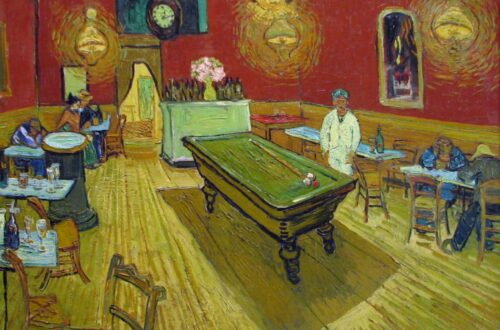With Halloween festivities in full throttle and the weather getting colder, the days shorter and the nights darker, life has been feeling rather spooky. This week, we’re looking back at some of the dark arts: gloomy, supernatural and spine-tinglingly scary masterpieces. From devils and deathsongs to screams and skeletons, it’s time to get your dark art history up to speed… just keep a light on.
1. The Lady of Shalott
Tennyson’s famous poem told the story of a cursed woman with a doomed fate, and William Waterhouse’s 1888 painting captures her in all her poetry and tragedy. The sorrowful road to death for the Lady of Shalott is clear: the cold, grey skies and dark waters contrasted against the white of the dress, the detail of the tapestry, the life of a lady in the process of fading. We can just about hear her as she sings her final song – ‘a long-drawn carol, mournful, holy.’ A painting both spooky and beautiful; a powerful artistic representation of a reluctant goodbye.

2. The Nightmare
Henry Fuseli’s 1781 painting encapsulates the thematic richness of dark art, laden with artistic precision, and at least three ideas for prospective Halloween costumes. With a demon and a dark horse, it’s hard to tell if one should hope for his subject to awake from her nightmare, or if it has already become her.

3. The Scream
Instantly recognizable as a modern icon, Edvard Munch’s 1893 painting – popularly known as The Scream – is worthy of a spot on the scary list. With a face stretched to absurd proportions and a backdrop that whirs in line with one’s senses, the cutting shock of a sudden scream is almost tangible. Cover your ears!

4. Weeping Woman
Picasso‘s response to the 1937 Nazi bombing of Guernica amidst the Spanish Civil War was to paint an anti-war mural. Weeping Woman, the last of a series of paintings referencing this mural, represents universal suffering with a face of terrifying tragedy.

5. The Face of War
Painted in 1940 during the inter-war period, this disturbing, foreshadowing painting demonstrates the trauma, distortion and infinite misery of human violence. With withered skin, wispy vines and wilted sockets, Salvador Dali’s message is far from subtle: his impersonation of war is a dead man, multiplied.

6. Electric Chair
A departure from his poppy portrayals of canned soup and Jackie Kennedy, Andy Warhol‘s 1964 screenprint of an electric chair in the former execution chambers of an American prison could double as a set on any horror movie. The contrast of light and dark in Electric Chair, along with the vast empty space illuminated by Warhol’s composition, solidifies its status as decidedly haunting.















One Comment
Pingback: